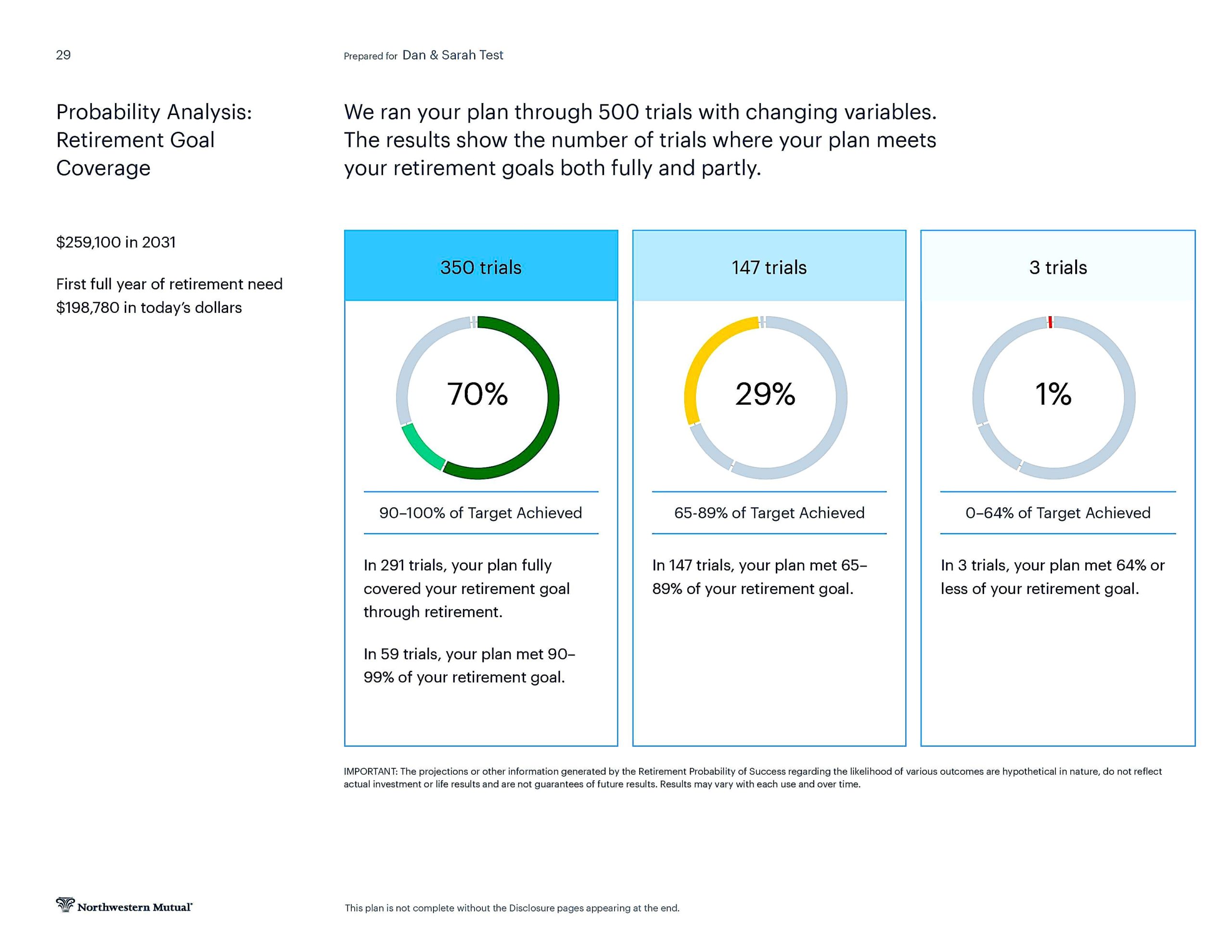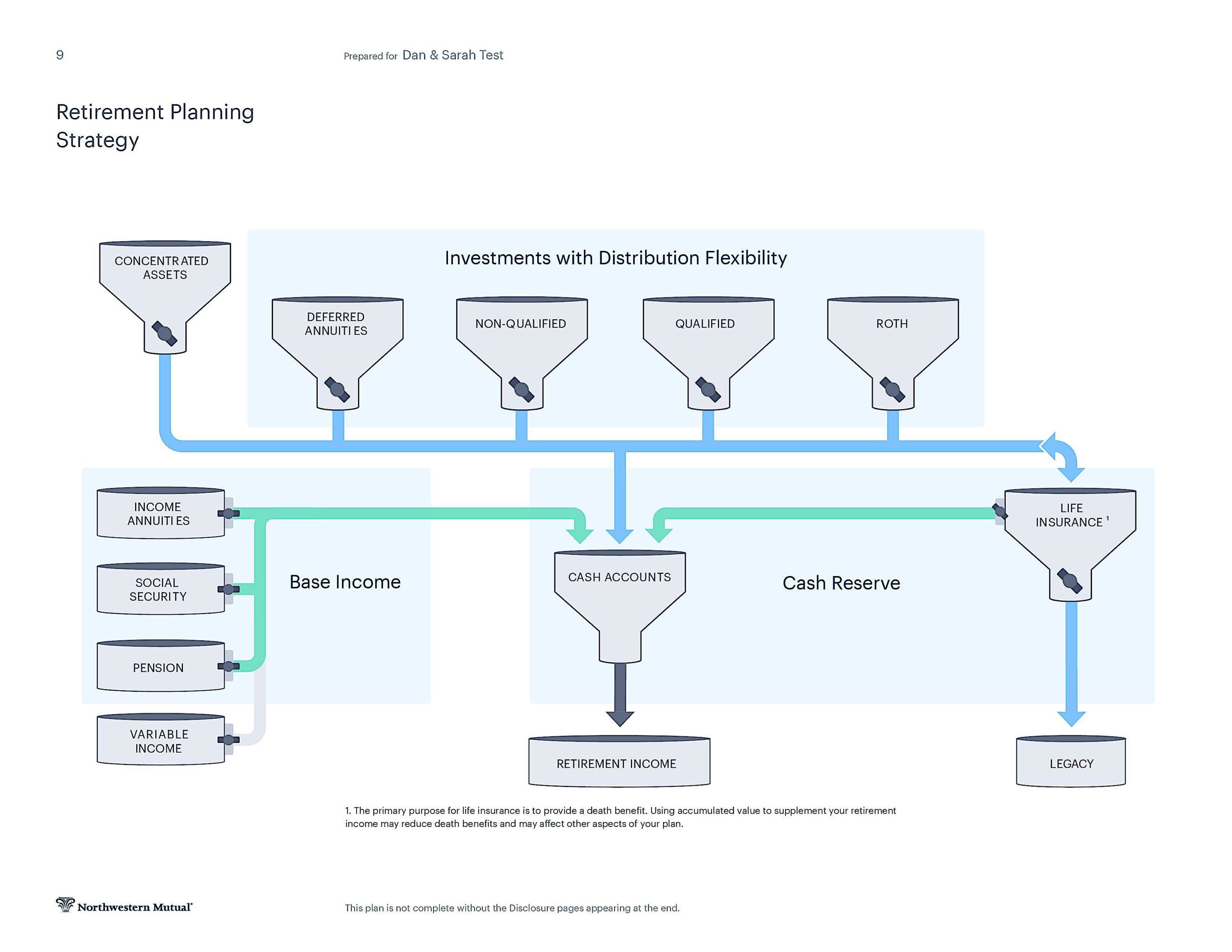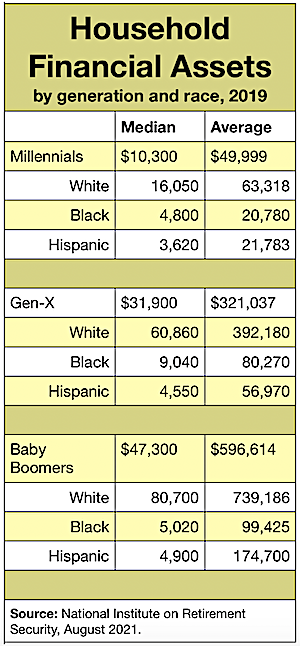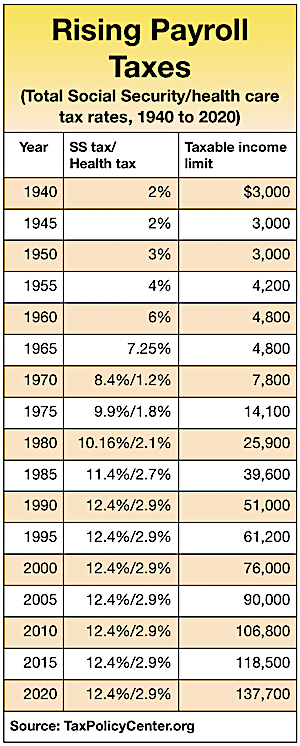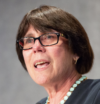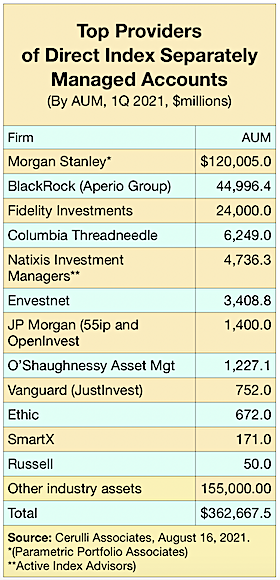Editor’s note: Northwestern Mutual provided RIJ with two screenshots from PX (see below) and this additional information:
“[Our] proprietary financial planning tool, PX, is available to the company’s entire field force of 11,000+ financial professionals, who provide insurance, retirement planning, investment services, estate planning and long-term care, among other products and services.
“We believe in taking a holistic approach to help our clients achieve greater financial security – one that integrates both insurance and investments, and leverages the trusted advice of a Northwestern Mutual financial professional. Our proprietary financial planning tool and products are only available through a Northwestern Mutual advisor.”
When Northwestern Mutual was contemplating the rollout of a new proprietary financial-planning tool called PX, it needed to navigate a number of factors, including a geographically dispersed network of advisors in the field who act as independent entrepreneurs to serve clients with holistic financial plans.
These advisors often develop distinct practice models depending on the needs of their clients—meaning any approach must be multifaceted and reflect the needs of the field force of financial representatives. The company also faced residual skepticism from earlier versions of the tool that did not meet advisor expectations.
When the COVID-19 pandemic emerged just as the PX rollout was set to begin in earnest, it threatened to disrupt the carefully planned and layered deployment effort. Change management and careful stakeholder engagement became essential.
Chief distribution officer Tim Gerend and chief customer officer Christian Mitchell partnered to lead the PX rollout and were able to chart a path to success in spite of these imposing odds. They sat down with McKinsey partners William Decherd and Kia Javanmardian to discuss their collaboration and how they embedded change through persistence, focus, and a clear mission.
McKinsey: Let’s start by talking a bit about the PX tool. What was riding on its rollout?
Christian Mitchell: We’re in the midst of a transformation of the overall client experience to ensure the relevance and vibrancy of Northwestern Mutual for many, many decades to come. PX is not just a financial-planning tool but also the cornerstone technology to this broader push into our future experience. That makes its adoption by our advisors critical on multiple fronts.
Tim Gerend: We have a proprietary and differentiated way of going to market, and we want that philosophy reflected in PX. We believe in the role of the advisor in delivering a great client experience. If our advisors aren’t using PX, our clients aren’t getting the full experience.
McKinsey: Every change-management effort presents its own challenges. What were the main ones you had to confront?
Tim Gerend: There were challenges for both design and adoption of PX. Building a proprietary planning tool is a really complicated thing to do. That’s compounded by the fact that we have a huge range of client diversity across our system. We have advisors who are running teams focused mostly on complex planning for high-net-worth clients. We also have advisors who are brand-new to the industry. Our platform needs to work for everyone.

Tim Gerend
The second, more practical challenge is on the adoption side, where we had a user base that was very loyal to their existing planning tool. Our advisors trusted this tool and knew how to use it to motivate their clients to plan and take action. For advisors who are paid based on outcomes, time is literally money; convincing them to do something different obviously poses a real challenge.
Christian Mitchell: When PX was initially created several years ago, it fell short. The early version was not tailored to our unique approach to planning. It didn’t fully showcase how a mix of insurance and investment solutions leads to better outcomes for clients. It also wasn’t built with feedback from the advisors who would be using it. When we were planning for the rollout of the improved PX tool, we knew we would have to address a tremendous amount of skepticism among the field.
Another challenge was that even for folks who had embraced financial planning, this was not a one-for-one swap. The legacy tool was very module-based and transactional. PX is a true, comprehensive financial-planning platform. So we have to get advisors to embrace a broader, deeper element of financial planning in addition to the new platform.
McKinsey: How did you go about crafting a plan to persuade financial advisors to embrace PX?
Tim Gerend: I’ve always enjoyed the challenge of building alignment between the headquarters team, our advisors, and clients. With our business model that is vertically integrated, you’re always solving for multiple constituencies.
Many independent advisors are in this career because they didn’t want someone telling them what to do. That characteristic can be maddening when you’re trying to drive programmatic change, but that’s also what makes advisors resilient and courageous enough to be really great in this business. They are independent business owners who are living and eating based on the success of their business. Those qualities make them the greatest test kitchen you could ever have because if something works, they’re going to use it. And if it doesn’t work, you can’t convince them otherwise. That dynamic ensures we’re delivering something that truly adds value to clients.
Christian Mitchell: Understanding and embracing that independent culture was our true opportunity. Instead of crafting a plan on our own, we developed a strategy to co-create the platform with some of our best advisors. They helped identify and prioritize the functionality and became advocates for the tool. When the field sees our top advisors use something as groundbreaking as PX, there is a natural tendency to want to check it out for themselves. We also have a targeted engagement strategy that started with new advisors with less complex needs, and as the platform evolves and becomes more robust, it makes sense for more senior advisors with sophisticated needs to use it. But getting adoption wins on the board early paved the way for the work that continues today.
Tim Gerend: For those reasons, I find it is much more effective to use an influence model. If you can work in such a way that the field recognizes it’s in their business interest and their clients’ interests to do it this way, you are going to get much more traction in the long run. What I always try to resist is the short term, “We want this outcome. How do we get there? What are the carrots and sticks?” I think it’s worth investing the energy to play the long game, to say, “How are we really solving this problem in a way that meets the needs of clients and the field?” And then, “How would you bring advisors into the process so that they can see it and believe it?”
McKinsey: What methods did you use to build consensus and instill a sense of accountability among your teams?
Tim Gerend: Ultimately, it comes down to working as a team that shares common outcomes rather than independent leaders spending time negotiating “turf.” One of the key developments was that Christian came to me and said, “Tim, I think strategy and execution for adoption of PX should sit on your team.” Christian’s team owned the development of PX, but it was essential for my team to lead adoption—with a lot of partnership across all areas of the enterprise. On one level, it felt like he was lateraling the hot potato to me. But he was exactly right. There was no way we were going to deliver this sort of pathway of adoption to the field without my organization being bought in 100 percent, because we have the on-the-ground relationships and the accountability and oversight of our field leaders, who drive a lot of behavior. Without being able to really leverage that muscle in an effective way, we weren’t going to get anywhere.
So this notion that it was not one leader’s priority but a shared-enterprise responsibility and part of improving advisor performance accelerated the adoption of PX. If our teams weren’t in lockstep from design to implementation, I don’t think this thing would have gotten off the ground.
McKinsey: What are some of the specific challenges you’ve faced with the rollout?
Tim Gerend: The rollout of PX has been a test with real clients: real money, real decisions, real consequences. The level of connection and influence there is really important. The effective integration of the teams meant my organization and Christian’s both accepted responsibility for design and implementation, even though we each don’t own the whole thing. It was a recognition of that shared accountability.
There are a lot of different constituents who are affected by the PX rollout, so it’s not just the advisors. It’s the staff members on their teams who also use the tool. It’s the field leaders who are responsible for overseeing and supervising the advisors. It’s the ecosystem of the network offices, which play a role in how we support and deliver financial security to our clients.
Early on, we were very intentional in selecting the pilot offices, because we were really testing the training, the meeting cadence, the communication, the reinforcement, the incentive structure—all the components of a successful adoption. Once we had that locked in for those four offices, we were able to move through on-boarding successive waves of offices, incrementally making it better each time because we were learning from the groups of offices.

Christian Mitchell
Christian Mitchell: It’s important to note that while we have achieved some significant milestones in our PX rollout, our work isn’t finished. We like to say it is the end of the beginning. We know it will take some time for advisors to truly embrace PX, just like it did for them to embrace the previous planning tool. We also know we will continue to evolve the platform to be more unique and more usable for our clients and advisors as we evolve it with capabilities that go beyond what’s being done out there in the industry today.
McKinsey: How were you forced to pivot in response to the onset of the pandemic?
Christian Mitchell: Initially, I was really worried about the implications of the pandemic, because our advisors are relationship-driven, and in-person interaction has historically been our model. Our change-management approach seeks to use personal influence and relationships with well-known advisors. When the pandemic hit, we made the decision, despite some anxiousness, that we were just going to move full steam ahead. This was our window of opportunity, given where PX was in terms of functionality and our aspirations for what we wanted to accomplish in the coming years.
So we pivoted from the in-person change-management learning sessions to an all-virtual approach. It ended up giving us much greater reach. Tim and I could hop on these kickoff calls with basically every advisor in the office. Even if we had been super-aggressive in terms of travel, we may have been able to get to only five or six offices. Instead, we were able to talk to all of them in a virtual way.
The virtual environment and doing a lot of calls in rapid succession led to iterative learning. When you’re doing much quicker cycles, I think you become much more attuned to what works and what doesn’t, so we could accelerate our learning and adjust our approach.
The virtual environment also encouraged more real-time discussion and afforded teams the opportunity to evaluate PX based on its merits, rather than the rumor mill, which helped tremendously.
Last, and likely most important, PX is a digitally native platform. You can easily show the outputs. It’s a piece of financial-planning software that is suited to working in a 100 percent virtual way. And so that was a massive tailwind as well.
McKinsey: What approaches did you use to overcome existing skepticism among financial advisors?
Tim Gerend: Number one, it’s always difficult to get the attention of the advisors. They are focused on their business, their next client, their next meeting. The practices look very different across the country, and so it’s a constant challenge for those of us at headquarters to say, “How are we shaping the message in a way that’s actually going get on their radar screen, resonate, and land?” The other challenge we had was unique to PX. This wasn’t our first go-round.
Our approach was really to reinforce the value of this change at multiple levels. Number one is obviously John Schlifske, our CEO, with Christian and I being responsible for carrying and reinforcing his strategic messaging. We wanted people to know that we are building a great client experience. PX is the centerpiece of that experience. It’s going to be integrated and seamless and proprietary to Northwestern Mutual and deliver things that you can’t get anywhere else. Having the voice of the CEO was necessary but not sufficient because you still had to have a way of getting people engaged with it. So we supported this with a robust strategic-communications approach that focused on driving measurable engagement across all stakeholder groups.
Second, we had to get advisors to experience the tool and realize PX really can do what they need it to. We were making real progress, in large part because of the partnership and co-creation. If people didn’t experience it for themselves, they would live on the urban legend and skepticism from the very first iteration of the tool.
We also had something called the icon strategy, which focused on engaging our field legends and heroes and role models. We wanted to make sure that some of our most recognizable advisors earnestly believed that this tool was the right approach—and then we amplified their support to demonstrate the alignment with these icons. If it’s good enough for them, then we’ll get the attention of the rest of the field who might be skeptical.
Last, we’ve really been leveraging the advisors who have been part of the co-creation process. Not only have they helped us design and build the platform, but now they are really the ambassadors for PX and the system. How we’re thinking about the next leg of the strategy and rollout really relies on them and their personal testimony about what PX can do for clients.
McKinsey: What metrics did you select to gauge the rollout’s success?
Christian Mitchell: We could have spent two months trying to construct the perfect set of goals that captured all the intricacies of adoption. Instead, we decided to pick a simple metric—the number of advisors who had adopted PX—that was directionally right. Making that call early and giving the teams clarity allowed them to unleash their full creativity and effort.
Tim Gerend: A simple metric was the most effective alignment tool that we could use between our teams because we had a shared definition of success. It also provided us with a weekly mechanism to know whether we were on track. And there was a lot of deep, critical analysis in weekly updates: How do we feel about it? Why are we up? Why are we down? It also drove a lot of the discussion about how we were adjusting the plan as we moved through the year.
Christian Mitchell: We basically have 100 percent adoption for the newer advisors. We have this new generation of digitally savvy advisors who are going to drive so much value for us going forward.
Now that we have progressed on this journey, market share is something we also carefully monitor. A year ago, only 30% of plans were PX plans. Today, more than half of plans are made using PX.
For our more incumbent advisors, we have a tool now that encapsulates our unique go-to-market strategy. It allows them to tell the story they want to tell. We just actually met with a group of our most productive, influential advisors, and the high point of the whole discussion was PX and how far it had come since its earlier iteration. Now they see it bringing to life this power of our unique insurance and investment solutions.
Our managing partners talk about PX as a recruiting tool because it’s so modern and sophisticated. They’re using it in their recruiting pitch for all their new folks. That was really gratifying to hear and gets back to the main strategic push behind PX—our clients. They are getting better, more comprehensive advice. It’s more digestible. They can see their goals online. They can track their progress against goals. We see great early results from that. We’re also seeing some really interesting early indications of greater advisor productivity.
McKinsey: Thinking back on your journey over the past 18 months, what were the main lessons you took away?
Tim Gerend: Number one, clearly for me far and away, is the importance of shared goals and team alignment. You have to have a clear and common definition of success because we were asking for so many different things from so many different parts of the organization. If you have people playing a different game, I don’t think that’s going to work.
Second, the architecture or the infrastructure that we set up around this effort was enabled by the speed of communication. We were looking at the metrics every week and evaluating the success of the communication plan, of the learning journeys, of the rack and stack of the PX features on the backlog. I just think the cadence that we were able to keep up was really critical.
Christian Mitchell: What was really different was bringing in the right partners early on for that shared accountability—basically forcing everyone to look each other in their eyes and say, “Hey, we’re going to either win and glory awaits, or we’re going to go down in flames. But we’re going to do it as a team.” So the biggest unlock was to make sure we had shared objectives and goals across the various teams. We needed to be in the trenches on this together. Achieving that shared purpose was critical.
© 2021 McKinsey & Co. Reprinted with permission.

